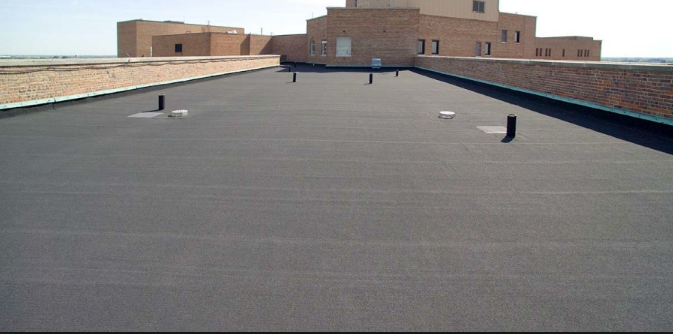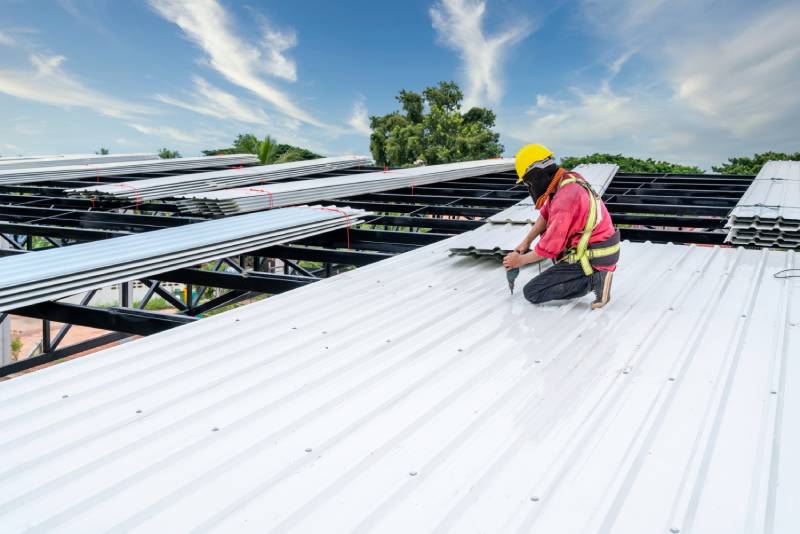How often should you replace your roof in Orlando? As a commercial property owner or manager in Orlando, your roof is more than just a cover for your building—it’s a critical asset that protects your business, your inventory, and your employees. But unlike a residential roof, a commercial roof is often a complex system subjected to intense weather, foot traffic, and rooftop equipment. This raises a crucial question: how often should a commercial roof be replaced? The answer isn’t a simple number. While most commercial roofs have an average lifespan of 15 to 25 years, this can be dramatically shorter or longer depending on a variety of factors. Knowing these factors and being able to recognize the signs of a deteriorating roof is essential for proactive maintenance and smart financial planning.
Factors That Determine Your Roof’s Lifespan
Several key elements work together to determine how long your commercial roof will last. Understanding them is the first step toward maximizing your investment.
1. The Roofing Material
The single biggest factor influencing your roof’s lifespan is the material it’s made from. Each type has its own expected durability:
- TPO (Thermoplastic Polyolefin): A popular choice for its energy efficiency and durability, TPO typically lasts 20-30 years. Its heat-welded seams provide excellent leak protection.
- EPDM (Ethylene Propylene Diene Monomer): Known as “rubber roofing,” EPDM has a long history of performance and can last 20-40 years with proper care.
- PVC (Polyvinyl Chloride): Similar to TPO, PVC is durable and highly resistant to chemicals, punctures, and fire. Its lifespan is generally around 20-30 years.
- Modified Bitumen: This asphalt-based roofing material can last 20-25 years, especially when applied in multiple layers.
- Metal Roofing: Often the most durable option, a metal roof can last 40 years or more, with some systems performing for over 60 years.
2. Quality of Installation
A high-quality roofing material is only as good as its installation. This is arguably the most critical factor. An improperly installed roof will fail prematurely, regardless of the material’s potential lifespan. Issues like incorrectly sealed seams, inadequate flashing around vents and HVAC units, and poor drainage can lead to immediate and recurring leaks, significantly shortening the roof’s life. Always choose a reputable, experienced commercial roofing contractor like Top Builder Roofer to ensure the job is done right from the start.
3. Climate and Environmental Conditions
Orlando’s climate, with its high humidity, intense sun, and frequent thunderstorms, puts a lot of stress on commercial roofs. The constant exposure to UV rays can degrade some materials, while heavy rain and wind can cause immediate damage. The “urban heat island effect” can also accelerate wear and tear. A roof in a temperate climate will naturally last longer than a roof in a region prone to extreme weather events.
4. Lack of Regular Maintenance
Think of your commercial roof like a car—it needs regular maintenance to perform well and last a long time. According to industry experts, a lack of regular maintenance is a leading cause of premature roof failure. A proactive maintenance plan should include:
- Routine Inspections: At least twice a year and after any major storm.
- Debris Removal: Clearing leaves, branches, and other debris that can clog drains and trap moisture.
- Prompt Repairs: Fixing small issues like cracks or punctures before they escalate into major leaks.
A well-maintained roof can easily add 5-10 years to its expected lifespan.
5. Building Use and Foot Traffic
Commercial roofs are often more than just a simple cover. They can be home to HVAC units, skylights, vents, and even solar panels. Foot traffic from maintenance crews or new installations can cause damage. The presence of grease vents from a restaurant, for example, can also degrade certain roofing materials like TPO, making it essential to choose a material that is resistant to such chemicals.

The Warning Signs You Need a Replacement
Even with the best maintenance, every commercial roof will eventually reach the end of its life. Here are some key signs that a replace your roof is imminent:
Increased Energy Bills: A sudden spike in your HVAC costs could be a sign that the roof’s insulation is failing, making your system work harder to keep the building cool.
Persistent Leaks: If you’re constantly dealing with leaks despite multiple repairs, it’s a strong indicator that the roofing system’s integrity is compromised beyond simple fixes.
Widespread Blistering or Cracking: Bubbles or blisters on the roof’s surface can indicate trapped moisture. Widespread cracking is a sign of material breakdown and aging.
Standing Water (Ponding): Flat roofs are designed to have a slight slope for drainage. If water consistently pools on your roof for more than 48 hours, it can put a strain on the structure and cause long-term damage.
Damaged Flashing: The flashing around the edges of the roof and penetrations is crucial for preventing leaks. If it’s rusted, bent, or missing, your building is vulnerable.
The Bottom Line
While the average lifespan of a commercial roof in Orlando is around 20-25 years, the actual time to replacement is a direct result of the materials you choose, the quality of installation, and how well you maintain it over time.
Don’t wait until a major leak or catastrophic failure shuts down your business. Be proactive. A professional inspection from a trusted roofer can give you a clear picture of your roof’s health and help you plan for a future replacement, saving you from a costly and stressful emergency situation.
Call us for a free, no-obligation commercial roofing estimation. We are here to help you through every step of the process!




